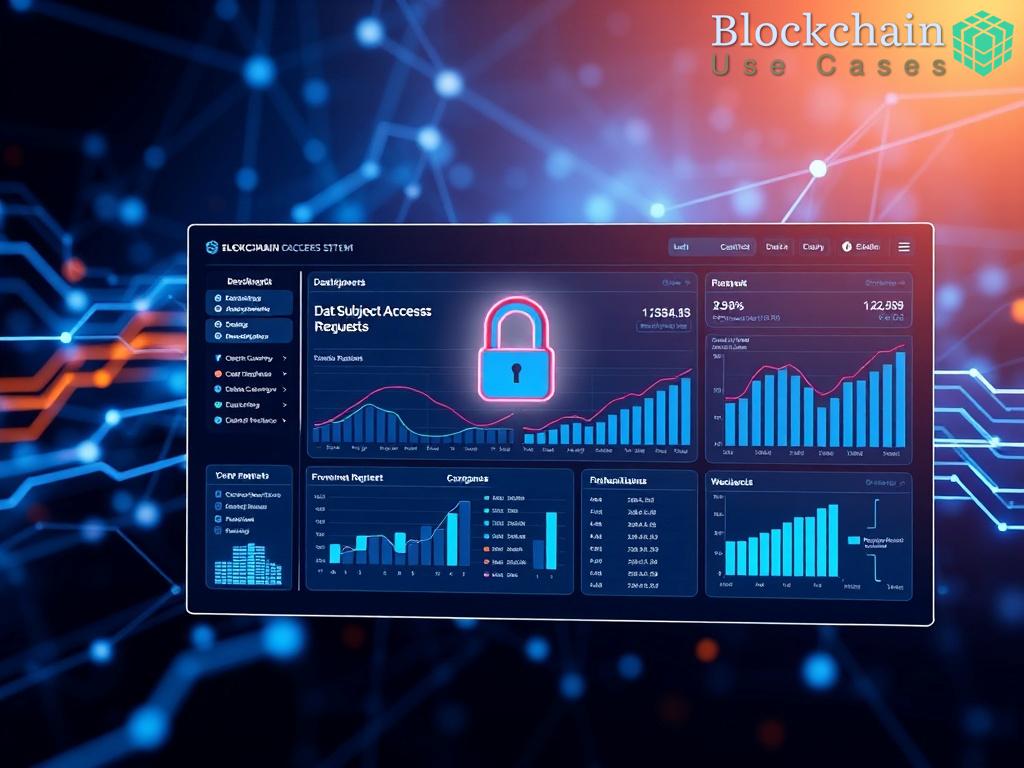Overview of Smart Contracts in Security Metrics
The Evolution of Security Metrics through Smart Contracts
In the rapidly changing landscape of cybersecurity, organizations are increasingly seeking innovative solutions to enhance their security posture. Smart contracts have emerged as a transformative tool in this domain, allowing for automated collection and reporting of security metrics. Leveraging blockchain technology, these contracts facilitate trust, transparency, and efficiency in data handling, enabling organizations to monitor their security systems with unprecedented accuracy.
The Mechanics of Smart Contracts in Security Metrics
Smart contracts operate on decentralized platforms, automating processes that were traditionally manual and prone to human error. This automation is particularly valuable in the realm of security metrics, where real-time data collection and reporting can significantly impact an organization’s response to threats. By embedding logic within the smart contract, organizations can ensure that security metrics are gathered consistently and reported accurately.
These contracts utilize predefined conditions to trigger specific actions, such as initiating an audit or sending alerts when certain thresholds are met. This systematic approach not only enhances the reliability of data but also fosters a culture of proactive security management.
Key Benefits of Utilizing Smart Contracts for Security Metrics
The integration of smart contracts into security metrics collection presents several compelling advantages:
- Transparency: All transactions and metrics are recorded on a public ledger, providing an immutable record that can be audited at any time.
- Automation: The automated nature of smart contracts reduces the workload on security teams, allowing them to focus on strategic initiatives rather than repetitive data collection tasks.
- Real-time Reporting: Organizations can access up-to-date metrics, enabling swift decision-making in response to emerging threats.
- Cost Efficiency: By minimizing manual processes, organizations can reduce overhead costs associated with data management.
As we continue to explore the intersection of smart contracts and cybersecurity, it is clear that these innovative solutions will play a crucial role in shaping the future of security metrics collection and reporting.
Implementation Challenges in Automated Reporting

As organizations increasingly adopt smart contracts to automate the collection and reporting of security metrics, they face a myriad of implementation challenges that can hinder their effectiveness. While the advantages of such technology are compelling, understanding the obstacles is crucial for a successful deployment. This discussion delves into the multifaceted challenges organizations may encounter, ranging from technical integration to regulatory compliance.
The Technical Hurdles of Smart Contract Integration
Integrating smart contracts into existing security frameworks is no simple feat. Organizations must navigate the complexities of blockchain technology, data interoperability, and system compatibility. Unlike traditional systems, smart contracts operate on decentralized platforms, which can lead to integration issues with legacy systems that were not designed with blockchain in mind.
Furthermore, organizations must ensure that the smart contracts are coded correctly to reflect their security policies accurately. A minor coding error can lead to significant vulnerabilities or erroneous metric reports, jeopardizing the entire security posture. Thus, investing in skilled blockchain developers and conducting thorough testing becomes paramount.
Regulatory and Compliance Challenges
Another layer of complexity arises from the regulatory landscape surrounding data collection and reporting. Different jurisdictions have varying requirements regarding data privacy and security, and organizations must ensure that their smart contracts comply with these regulations. This is particularly challenging in sectors such as finance and healthcare, where the stakes are higher due to the sensitive nature of the data involved.
Moreover, the immutable nature of blockchain can pose challenges in instances where data correction is necessary. Organizations must have protocols in place to address compliance breaches without compromising the integrity of the blockchain.
Strategies for Overcoming Implementation Obstacles
To effectively tackle the implementation challenges of smart contracts in automated reporting, organizations can adopt several strategies. Below is a summarized list of actionable steps that can facilitate a smoother transition:
- Conduct Comprehensive Training: Ensuring that security teams are well-versed in blockchain technology and smart contracts will enhance their ability to manage the new systems.
- Engage in Pilot Programs: Implementing pilot projects can help organizations test the waters and identify potential pitfalls before a full-scale rollout.
- Collaborate with Legal Experts: Working closely with compliance officers and legal advisors will ensure that all aspects of the smart contracts adhere to relevant regulations.
- Establish Clear Protocols for Data Management: Creating guidelines for data correction and breach response will mitigate risks associated with the immutable nature of blockchain.
By addressing these challenges with a proactive mindset, organizations can pave the way for successful implementation of smart contracts in their security metrics collection efforts, ultimately leading to a more robust cybersecurity framework.
Benefits of Using Blockchain for Security Metrics
The advent of blockchain technology has not only revolutionized financial transactions but has also paved the way for enhanced security metrics in cybersecurity. By harnessing the unique attributes of blockchain, organizations can realize numerous benefits that significantly improve their security frameworks. Understanding these advantages is essential for organizations aiming to bolster their defenses against the growing array of cyber threats.
Uncompromising Data Integrity
One of the standout benefits of utilizing blockchain for security metrics is the unwavering integrity of data. Each transaction recorded on a blockchain is immutable, meaning it cannot be altered or deleted without leaving a trace. This characteristic is particularly advantageous for security metrics, where a reliable, tamper-proof record is critical for audits and compliance checks. Organizations can rest assured that the data they rely on for decision-making is both accurate and trustworthy, significantly reducing the likelihood of data manipulation.
Enhanced Collaboration and Accountability
Blockchain technology fosters a culture of collaboration and accountability among stakeholders involved in security metrics collection and reporting. With a decentralized ledger accessible to all authorized parties, security teams can share metrics in real-time, allowing for more coordinated responses to vulnerabilities and threats. This transparency not only builds trust among team members but also encourages a proactive approach to security management. Furthermore, the ability to track who accessed what data and when, contributes to a heightened sense of responsibility, ensuring that all parties are held accountable for their roles in the security landscape.
Cost-Effectiveness and Resource Optimization
Organizations are continually seeking ways to optimize their resources while minimizing costs. By adopting blockchain for security metrics, companies can achieve significant cost savings over time. The automation and efficiency gained through smart contracts reduce the manual labor associated with data collection and reporting. This, in turn, allows security teams to redirect their focus towards strategic initiatives that enhance the overall security posture. In a landscape where cyber threats are constantly evolving, the ability to deploy resources more effectively can be a game-changer.
Integration with Existing Security Frameworks
As organizations increasingly adopt innovative technologies to bolster their cybersecurity frameworks, the integration of smart contracts into existing security systems has emerged as a pivotal consideration. These automated protocols present both opportunities and complexities that necessitate careful planning and execution. Understanding how to effectively merge smart contracts with traditional security infrastructures can dramatically enhance an organization’s ability to monitor and respond to threats in real-time.
Bridging Legacy Systems with Blockchain Technology
One of the foremost challenges in integrating smart contracts lies in bridging the gap between legacy security systems and modern blockchain technology. Many organizations have invested heavily in traditional security solutions that may not inherently support decentralized applications. This requires a thoughtful approach to ensure that the technological capabilities of blockchain do not compromise existing functionalities. Organizations should evaluate their current security frameworks to identify integration points where smart contracts can enhance efficiencies without disrupting established processes.
For instance, security incident management systems can be augmented with smart contracts that automatically trigger incident response protocols when specific security metrics are reached. This integration can lead to faster response times and improved overall security posture. However, it is critical that organizations conduct comprehensive assessments of their current systems to determine compatibility and identify potential integration hurdles.
Data Interoperability: A Key to Successful Integration
Another crucial aspect of integrating smart contracts into existing security frameworks is data interoperability. Organizations must ensure that the data formats used across different systems are compatible and can be seamlessly exchanged. This involves establishing standardized protocols that can facilitate the flow of information between legacy systems and blockchain-based applications. By doing so, organizations can create a cohesive security metrics collection system that leverages the strengths of both traditional and innovative technologies.
Moreover, organizations should consider utilizing middleware solutions that can serve as a bridge between disparate systems, ensuring that data flows smoothly without loss of integrity or accuracy. This strategic approach not only fosters better communication between systems but also enhances the reliability of the security metrics being collected.
Strategic Collaboration for Enhanced Security
Lastly, successful integration of smart contracts within existing security frameworks hinges on strategic collaboration among various stakeholders. Involving IT teams, security personnel, and compliance officers early in the integration process can lead to more robust solutions that address the diverse needs of the organization. Regular communication and collaboration can ensure that all parties understand the capabilities and limitations of smart contracts, thus enabling them to maximize the benefits while minimizing risks.
Furthermore, organizations should prioritize training and capacity-building initiatives aimed at equipping their teams with the knowledge necessary to navigate the complexities of this integration. Through a collaborative approach, organizations can foster a culture of innovation that not only embraces new technologies but also continuously seeks to improve their security metrics collection and reporting capabilities.
Future Trends in Smart Contracts for Security Automation
As the digital landscape continues to evolve, the role of smart contracts in the realm of security automation is poised for remarkable advancements. These automated protocols are not only redefining how organizations collect and report security metrics but are also paving the way for innovative solutions that enhance overall cybersecurity resilience. By looking towards the future, we can identify key trends that are likely to shape the integration of smart contracts in security automation.
Adaptive Security Frameworks through AI Integration
One of the most significant trends on the horizon is the integration of artificial intelligence (AI) with smart contracts. As organizations face increasingly sophisticated cyber threats, the ability to adapt to these challenges in real-time becomes paramount. By embedding AI algorithms within smart contracts, organizations can create dynamic security frameworks capable of responding autonomously to emerging threats. This synergy not only enhances the predictive capabilities of security metrics but also ensures that organizations remain one step ahead of cybercriminals. Imagine a system where smart contracts self-adjust based on historical data and threat patterns, providing a tailored response to specific vulnerabilities.
Interoperability and Standardization Across Platforms
Another critical trend is the push for interoperability among various blockchain platforms and traditional security systems. As organizations diversify their technological ecosystems, the ability of smart contracts to communicate seamlessly across different environments will become essential. Standardized protocols will facilitate smoother data exchanges, reducing latency and errors in security metrics reporting. This interconnectedness will empower organizations to harness a broader array of data sources, leading to more comprehensive insights and informed decision-making. Furthermore, the establishment of industry standards can pave the way for collaboration, enabling cybersecurity stakeholders to share best practices and improve collective defenses.
Moreover, as smart contracts evolve, the focus on enhancing user experience will drive the development of user-friendly interfaces. Security professionals will benefit from intuitive dashboards that provide clear visualizations of security metrics, making it easier to interpret data and respond accordingly. By prioritizing usability, organizations can ensure that their security teams can leverage the full potential of smart contracts without being hindered by complicated interfaces.
In conclusion, the future of smart contracts in automated security metrics collection and reporting is bright and full of potential. With advancements in AI integration, interoperability, and user experience, organizations can look forward to a more proactive and effective approach to cybersecurity. By embracing these trends, businesses will not only enhance their security posture but also foster a culture of continuous improvement in their security practices.


















